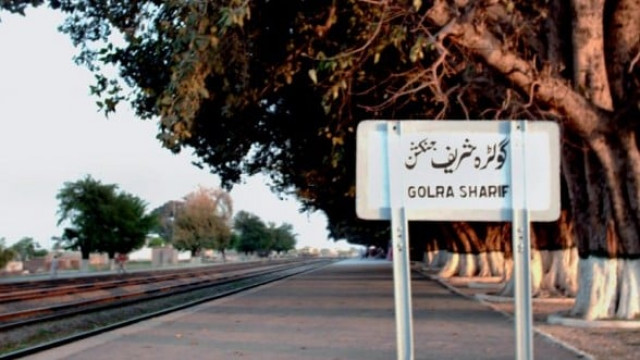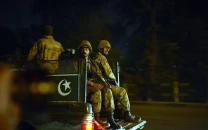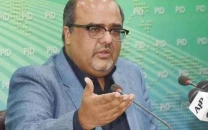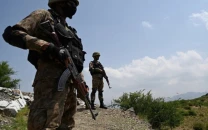Yesterday once more

Yesterday once more
A visit to one such place in Islamabad certainly takes one back in time. Heritage Museum, recently established at the Golra Sharif Railway Station, is a historic landmark that not many are aware of. It is situated at about fifteen minutes drive from Islamabad toll plaza.
In the very first glance at the railway station, a feeling of being amongst hundreds of late nineteenth century Indians heading towards the platform overcomes a person. After crossing the four railways tracks, one is surrounded by centuries old Banyan trees, the trunks of which would have been white-washed once.
Although retaining its original design, the platform was renovated recently. The original architecture of the building, constructed in 1882, was not disturbed. The Station Master, Makhdoom Sharif, said the Golra Junction Railway Station, some 1,994 feet above sea level, is located in the southeast of the Margalla Hills and east of the cradle of Ghandara civilisation, the ancient city of Taxila.
The station was established in 1882 and upgraded as junction in 1912.
This historic Railway Station connects Peshawar, Kohat and Havalian. Outside the building of the museum, on the left side of the platform was a hand-crane. Makhdoom said that it was tested for lifting more than five hundred kilograms of weight in 1984.
There was another crane of the same stature on the opposite end where a group of Pathan girls and boys were taking an imagery drive on the machine. These local kids were familiar with tourists and cameras in their hands. The typically Victorian style of platform was not very busy at that time. A train approached the station and suddenly there was a little hustle bustle as passengers off-boarded.
After leaving the platform, one comes across two separate rooms where rare old items of North Western Railways, which later became Pakistan Railways, have been placed on display. The glass door of this green windowed museum, sporting the insignias of both Pakistan Railways and North West Railways, was locked.
The Station Master opened the door of the museum...
Inside the hall were rare items on display including watches, pendulums, kerosene lamps, gate signal lamps, crockery, fans, arms and ammunition, surgical items used at railway hospitals, a 1904 hand pump, long armed chairs used in waiting rooms and Dak bungalows, a Railway timetable of 1943 and historic photographs. The wood panelled roof of the museum had antique fans, including a rare two winged one.
The British crockery at display includes spoons, forks and knives made of pure silver. However, the models of railway locomotives were newly made and were not antique. Makhdoom said these were the works of the local technicians and workers. Makhdoom knew some rare historic facts about certain items on display. He said there was a key, placed at the museum, which was used to lock doors of passenger coaches carrying refugees to Pakistan to protect them from forcible opening of the doors by miscreants present at the Indian stations along the way to their destinations. A Special Heritage Train, driven by an ancient steam engine, accompanied by passenger coaches was stationed just outside the second museum room.
The steam locomotive was accompanied by steam cranes, 100-year-old hand crane, saloons, passenger, postal carriages and freight coaches. The saloon was said to belong to the Viceroy-e-Hind but no name was mentioned on it. Pointing towards the locomotive, Makhdoom said “This 110-year-old steam engine was in regular use, as early as 1990 and was still in running condition.”
A beautiful white coach, attached to the rear end of the train, was believed to be a dowry-gift from some Maharaja to her daughter. Makhdoom did not know the exact details. The Station Master also said that every year thousands of devotees visit the tomb of early twentieth century Punjabi mystic poet, Pir Meher Ali Shah.
These devotees come from every corner of the country and a majority of them use train as the mode of travel. They off-board the train at Golra Railway Station but not many of them stop over to witness the late nineteenth century railways system in Indo-Pak Sub-continent.
Ignorant of the presence of a whole treasure just a footstep away, they simply move on toward their destination. Undoubtedly, the Museum hosts a real heritage but it needs to be publicised in order to attract visitors.



















COMMENTS
Comments are moderated and generally will be posted if they are on-topic and not abusive.
For more information, please see our Comments FAQ